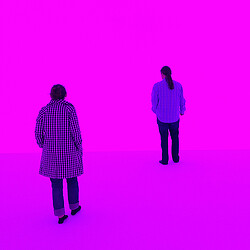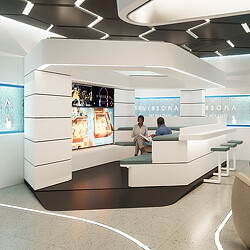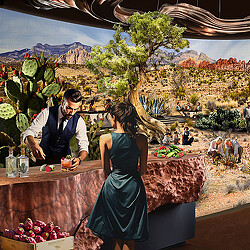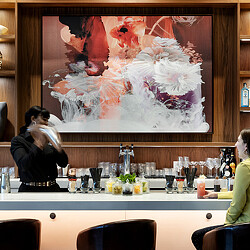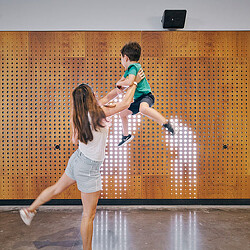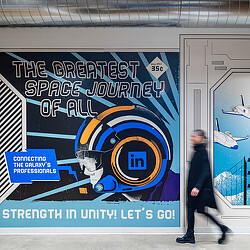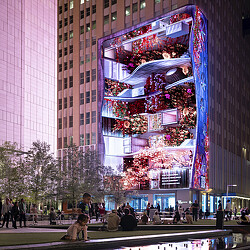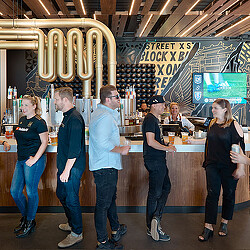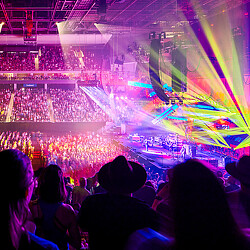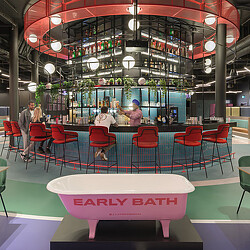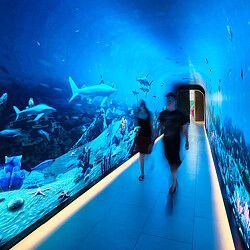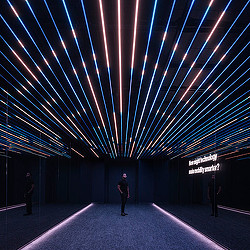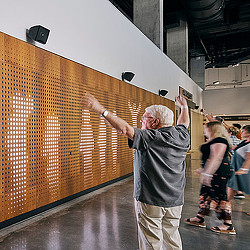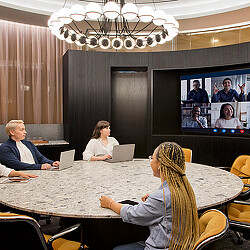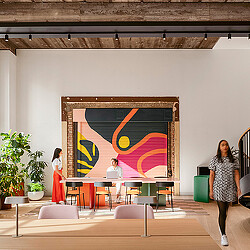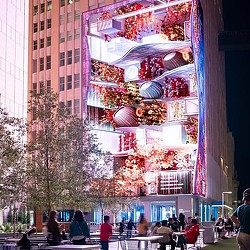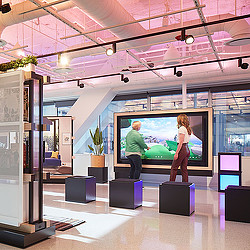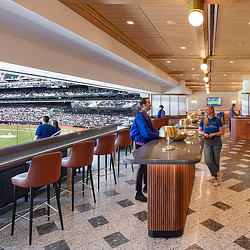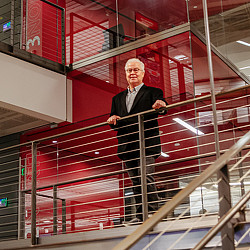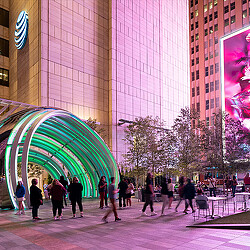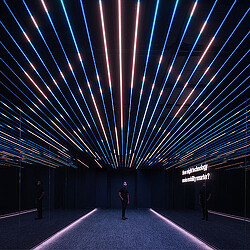Designing with Intention: Creating Emotional Connections Through Immersive Experiences
Gensler’s global leaders of Digital Experience Design and Entertainment unpack the concept of experiential architecture and what makes an immersive experience.
As the experience economy continues to grow, Gensler’s designers are bringing innovative storytelling into the built environment through thematic creative development and technology-led activations. Immersive experiences have become a mainstay in culture, with people seeking out shared, participatory moments that connect and inspire them. Google Trends recorded the term “immersive experience” exploding over the past five years with the popularity of touring events, mixed reality, and art installations.
In this Q&A, Rob Bischoff, Digital Experience Design and Ann Morrow Johnson, Entertainment, unpack the concept of experiential architecture, explore the traits that make an experience truly immersive, and reflect on the importance of designing with intention when applying experiential design to everyday moments and places.
"Immersive experience” is a term that gets used to describe everything from theme parks and interactive theater to marketing activations and art installations. What do we mean when we talk about immersive experiences in an architectural context?
Ann Morrow Johnson: The use of the term “immersive experience” is everywhere; for us it goes beyond what we see in physical space. We did some research that focuses on 5 traits that immersive generally share, but the first thing I typically look for is a sense of story or shared narrative. Extra points if it engages with one of the senses. It's not just something you see. It’s some blend of the five traits that, once you've got several of those together, it starts to feel immersive in a genuine way, in that it can touch you or make an impact on you as a guest or a user of the experience.
5 Traits of Immersive Experiences
1. Story-driven
2. Distinctive location or setting
3. Sensory and emotionally engaging
4. Participatory and memorable
5. Elements of transformation
Rob Bischoff: The differentiator is generally that these are shared experiences. We are creating experiences that are individually arresting, but are part of a larger destination, they are repeatable, that are amplified by experiencing them with others, and that you're creating some level of visceral connection, either to a place, an event, a piece of IP, or to each other in a shared space.
How do you translate a story or a brand value into an experience in a physical space, and how does technology inform or support that approach?
RB: The two equal parts that we'll start with are: the user and the story — whether that be the brand story, a narrative experience, or a piece of IP — and where do those two align? And then how do we create something cohesive around the two that stops people and grabs their attention? Technology isn't the nail or the hammer, it's an option. And we use it when it can help support either of those two elements, whether it be the user or the story. Ideally, we don't want it to be overt. It's not about showcasing the technology. It's about using technology in a way that is going to create an experience that drives home those two values. That's how we think about it from a Digital Experience Design perspective.
AMJ: The way we think about any one thing — from a piece of technology, to a piece of steel, to a piece of music, or even the quality of light in a space — these are all tools for how you can convey a feeling, or a sense of place, and provide emotional connection with a moment. There’s no one silver bullet to creating something that truly immerses you, transports you. It’s about combining the right ingredients, the right tools for the story you’re telling and doing it with intention that makes an experience sing.
When people think about immersive experiences, the first thing that comes to mind tends to be huge, epic spaces like the Sphere in Las Vegas or theme parks. How do you see experiential being scalable to everyday moments and places in people's lives?
AMJ: Some of the most compelling experiences I have ever been a part of are some of the quietest and the smallest, because they have felt the most thoughtful and the most intentional. It's a one-on-one conversation with an actor in a piece of immersive theater or a tiny discovery with a friend in the corner of a room that feel personal. I am excited to see experiential design continue to influence more third places in people’s lives, meeting people where they are.
RB: When you think about a theme park you willingly suspend reality and dive into someone else’s world — putting the visitor in a very different state of mind. What we're doing is bringing that same wonder into a workplace or into a retail environment, into a mall, a sports venue. Those experiences need to be more thoughtful, allow for repeatability, and create for a sense of wonder or exploration with every repeated visit. It puts a bigger onus on understanding the context of the visitor because they're not in a state of suspended reality, they're in their everyday.
AMJ: That idea of suspension of disbelief is important. You want as many “proof points” or details that help you believe you’ve been transported as possible. Just as important are the ways you are invited to immerse yourselves, because people have a hard time getting out of their task mode. Finding the right invitation to play or explore or discover or be delighted by a different world is one of the critical pieces of design. It can be simple but getting it right is every bit as important as the big reveal or the meat of an experience.
You both touched upon the idea that these experiences are designed to transport people and give them moments of wonder and joy. How do you balance the need for connection and community in a digital space when technology is so often a contributing factor to feelings of isolation and loneliness?
RB: We're working with a workplace client right now that wants to create a space that is actually a reprieve from technology. Ironically, we're going to use technology to create that reprieve, but in a very different way. We don't want to inundate people with more screens and content, but to create an environment that is responsive to time of day, mood, and the activity of the space, and some level of personalization to what the user needs to create that respite. We’ll use sound and light to create these moments of joy and celebration.
In an architectural sense, we often think of technology as screens and content, and what we're doing is using a combination of various technology to create experiences, and those can happen in a multitude of inventive ways.
AMJ: We talk about wonder and joy; a core piece of those feelings, for many people, is a sense of connection. From all the studies around increasing rises in loneliness, anxiety, and depression, we’re also seeing a spike in people seeking out the antithesis of doomscrolling alone in a room. Interestingly, I don't think that that’s necessarily a rejection of being in the technological space. It's about finding the things that feel authentically emotionally resonant and can bring you joy and a sense of community whether online or in a physical place.
So, if you design things to have a common goal or create a shared sense of community — like a game where you are encouraged to work with each other — people do, generally, behave differently than if they are in an environment where they are incentivized to behave as individuals.
As we think about digital interventions in physical places as well as how people participate in digital worlds, designing for a sense of connection and community is a thing that we have increasing numbers and styles of tools to use. What we’re excited about is how we combine these emerging possibilities with the deep tradition of how people connect.
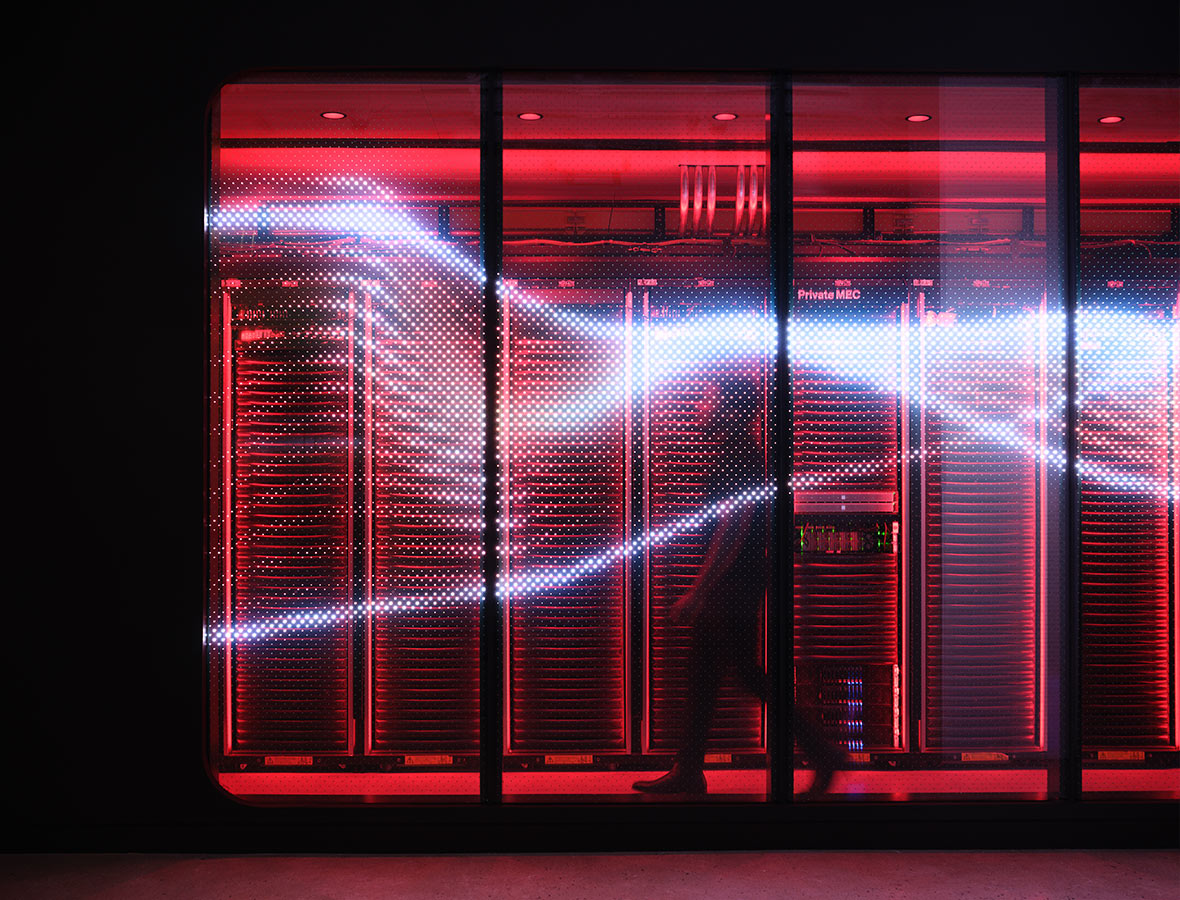
For media inquiries, email .


